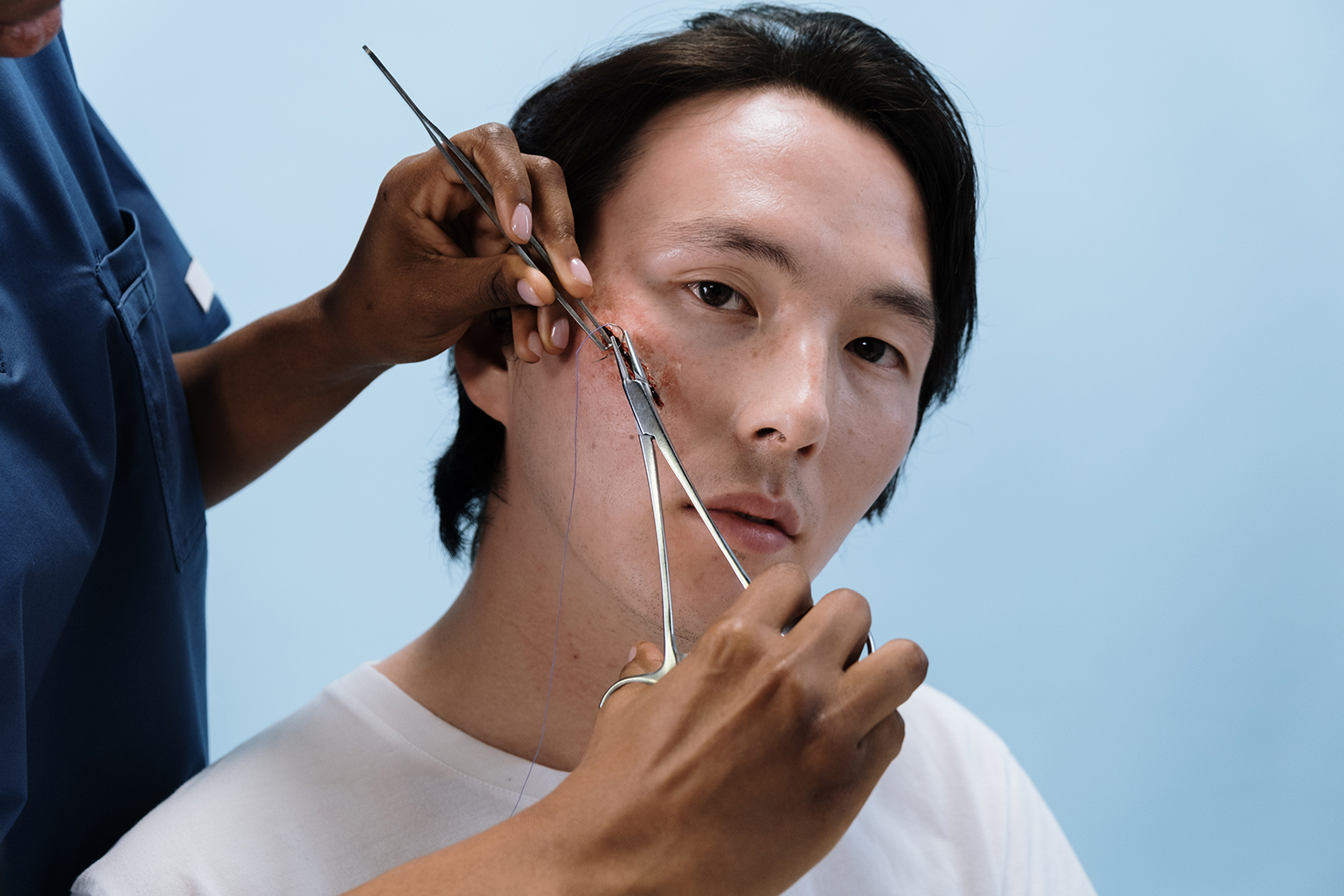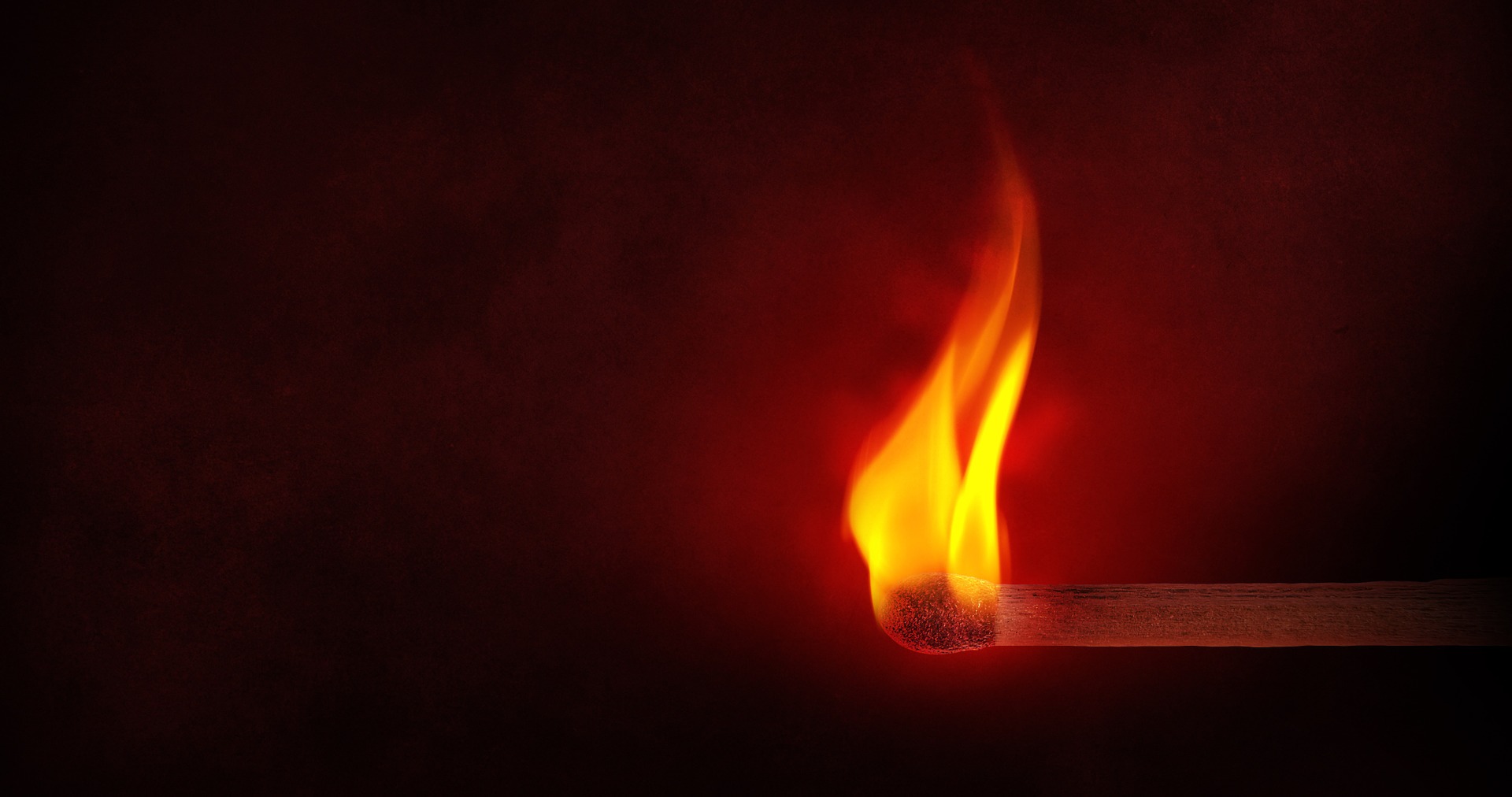Urgent Care
Diagnosis, treatment, and services for your everyday medical needs such as flu shots and lab work.

Major or small, we can all think back to a time when we cut, scraped, or grazed ourselves. Sometimes all we needed was a band-aid, other times stitches. Either way, these unexpected accidents happen, especially for kids. Children love to play and sometimes when they’re monkeying around on the jungle gym or the playground, they fall and find themselves with a laceration. As a parent, it can be terrifying to find your son or daughter suffering from an open wound which is why understanding the difference between a deep wound and a shallow one is so important.
A laceration is a tear or opening in the skin caused by an injury. Lacerations may be small and need only minor treatment or may be large enough to require emergency medical care. Wounds such as cuts, scrapes, and lacerations are a split of the skin caused by an impact of some sort. It is common for children to sustain these types of injuries through play, sports, accidents, or ordinary day-to-day activities. Lacerations and other abrasions can happen in almost any area of the body. Depending on the area affected and the severity of the cut, there may be a lot of bleeding or very little.
Minor wounds do not usually require medical attention and can be managed with standard first-aid procedures at home. You should apply pressure to your child’s wound with a clean paper towel or cloth and after removing pressure, the bleeding should slow down or stop altogether. If bleeding continues, reapply pressure and take your child to their healthcare provider for further evaluation.
If bleeding has stopped or slowed, rinse the wound and surrounding area with water. If you can see any dirt or debris in the wound, use a pair of sanitized tweezers to remove any particles. Very small amounts of dirt are OK in grazes but if there are large amounts that you can’t remove, take them to a medical professional who can do it for you.
Lastly, cover the wound with a bandage. This will help to keep the wound clean and will protect the area as it heals. Keeping the wound covered also keeps the wound moist, which helps the healing process.
Like minor wounds, try to stop the bleeding by applying pressure to the injured area. If this doesn’t work and there is a large amount of bleeding that does not quickly stop, or the wound is very deep or is a deep puncture wound, or the wound is gaping apart, despite controlling the bleeding it may need closing with glue or stitches which will require a visit to their healthcare provider.
Stitches are special types of thread that hold wound edges together while they heal. Stitches help to stop bleeding, reduce scarring and decrease the chance of infection in the wound.
Steri-Strips are special adhesive bandages that can sometimes be used on shallow wounds instead of stitches. Steri-Strips perform the same functions as stitches.
Lacerations that involve the face, are longer than 1/2 inch, are deep, or are bleeding heavily, may require stitches.
If your child’s healthcare provider needs to place stitches or use Steri-Strips to close a laceration, you will be given specific instructions on how to care for the stitches. Treatment at home will be based on the place and size of the laceration, the type of stitches used, and any special needs noted by your child’s physician. Sometimes antibiotics are given to help prevent infection in the wound.
Some stitches dissolve and do not need to be removed while other stitches require removal. Your child’s provider will let you know when to return to have stitches removed. It’s important to know that you should not attempt to remove your child’s stitches at home.
For minor wounds, change the bandage whenever it becomes wet or dirty and replace it with a fresh one. Watch for signs of infection as the wound heals and if it seems to not be healing properly, take them to their healthcare provider for evaluation.
Typically, lacerations are no big deal but if your child’s wound doesn’t stop bleeding and the cut looks deep, your best bet is to have them looked at by a medical professional. Wounds can be scary, and no parent wants to witness their son or daughter bleeding, but rest assured, the experts at Chai Care will take great care of your child and will have them as good as new in no time!
* Legal disclaimer: The content of this article and the entire Chai Care blog is for educational purposes only; it does NOT constitute medical advice and must not be considered as such. Please consult a medical professional regarding any symptoms or health concerns you or your loved ones.
Jan 10, 2023
If you play with fire you are going to get burned. As adults, we know this already, most likely from a bad experience, but children have yet to figure this out. Burns are nothing to trifle with and can cause serious damage, which is why it is paramount to stay informed and to teach our youth the danger of playing with fire and the consequences that may ensue.
As you already know, burns are a type of injury caused by heat. Heat can be thermal, electrical, chemical, or electromagnetic energy. Most burn accidents occur at home. Interestingly enough, about 75% of all burn injuries in children are preventable. Scalding is the leading cause of burn injury for children, while smoking and open flames are the leading causes of burn injury for older adults.
We all know what a burn is, but many people don’t know what the most common burns are. First off, there are thermal burns. These burns raise the temperature of the skin and tissue underneath. Thermal burns happen from steam, hot bath water, tipped-over coffee cups, hot foods, cooking fluids, etc. Next, there are radiation burns which happen from exposure to the sun’s ultraviolet rays (a sunburn because the skin isn’t well-protected in the sun) or from radiation such as during an X-ray. Then, there are chemical burns that happen from strong acids (like drain cleaner or button batteries) or spilling chemicals (like bleach) onto the skin or eyes. Lastly, electrical burns. These are from contact with electrical current and can happen from things like biting on electrical cords or sticking fingers or objects in electrical outlets, etc. Knowing the type of burn a child has can help with first-aid measures. All burns should be treated quickly to lower the temperature of the burned area and reduce damage to the skin and tissue underneath.
Simply put, there are first, second, and third-degree burns—1st being the least significant and 3rd being the most serious.
…Also known as superficial burns, burns are the mildest type of burns. They’re limited to the top layer of skin. Signs and symptoms to look out for would be redness, pain, and minor swelling. The skin is dry without blisters. Healing time is about 3–6 days; the superficial skin layer over the burn may peel off in 1 or 2 days.
…Which are a bit more serious. These burns are more serious and involve the top layer of skin and part of the layer below it. The burned area is red and blistered and can swell and be painful. The blisters sometimes break open and the area is wet looking with a bright pink to cherry red color. Healing time varies depending on the severity of the burn. It can take up to 3 weeks or longer.
…Are the most serious type of burn. They involve all layers of the skin and the nerve endings there and may go into underlying tissue. The surface appears dry and can look waxy white, leathery, brown, or charred. There may be little or no pain or the area may feel numb at first because of nerve damage. Healing time depends on the severity of the burn. Most need to be treated with skin grafts, in which healthy skin is taken from another part of the body and surgically placed over the burn wound to help the area heal.
Most small, blistering burns can be treated and cared for at home, however taking your little one to your healthcare provider will always be your best bet. If you have any questions about whether a burn can, be taken care of at home, discuss it with your physician. If you do choose to take the home-care route, make sure to cool the burn by running cool running water over the burn for about five minutes. This helps stop the burning process and decreases pain and swelling. Do not put ice on a burn and don’t rub the burn, because this can worsen the injury. Do not break blisters as this can increase the risk of infection at the burn site. Make sure to cover the burned area with a clean bandage that will not stick to the burned site. This helps decrease the risk of infection and decreases pain. Lastly, protect the burn. It’s crucial to keep the burn site clean with gentle washing with soap and water. Do not apply any ointments to the burn site unless instructed by your pediatrician. Never apply butter, greases, or other home remedies to a burn before discussing it with your healthcare provider, as these can increase the risk of infection as well.
If you believe that your child is suffering from a third-degree burn and has blisters larger than 2 inches or full-thickness burns with white or charred skin, go to an emergency department. It is important that before coming in you should cover the burn with a sterile dressing or clean washcloth or towel.
Superficial or mild partial thickness burns hurt for about two days and peel like a sunburn in about a week. These burns shouldn’t leave a scar if managed correctly. If the burn is open, your child will need a tetanus booster if it has been more than five years since his/her last tetanus shot, your child has had less than three tetanus shots in his/her lifetime, or if you’re not sure when your child had a tetanus shot last. Your child should get this shot from your pediatrician within three days of the burn. Call your healthcare provider immediately if your child’s burn looks infected. Symptoms include a large red area or streak larger than 2 inches around the burn. A fever may or may not be present. If there is increased redness or notice any signs of infection, bring your child to Chai Care and our top-notch staff will gladly take care of your little one!
* Legal disclaimer: The content of this article and the entire Chai Care blog is for educational purposes only; it does NOT constitute medical advice and must not be considered as such. Please consult a medical professional regarding any symptoms or health concerns you or your loved ones.